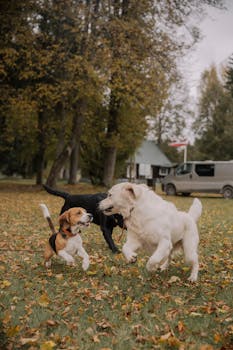Unhappy Animals Languish in Overcrowded Shelters
Animal Care Centers of NYC is struggling to find homes for soaring numbers of abandoned pets.

By Erin Nolan
Oct. 24, 2023
Good morning. It’s Tuesday. I’m filling in for James Barron today. We’ll look at why so many dogs are coming into New York City’s animal shelters and how that is affecting the shelter animal population.
Image Credit...Sara Naomi Lewkowicz for The New York Times
Credit...Sara Naomi Lewkowicz for The New York Times
Her landlord never allowed pets, but for 14 years Catrice Brown managed to keep Chip the Chihuahua mix as her companion. He loved car rides and baths, and whenever Brown and her family left the apartment, he was waiting at the door when they returned, she said.
At first, Chip was well behaved and rarely gave Brown anything to worry about, she said. But as he aged, Chip became harder to hide.
“Now when we step outside our apartment, there are reminders posted saying we can’t have pets — while he’s going to the bathroom in the elevator,” Brown, 50, said. “We just can’t keep him anymore. It’s either him or us.”
Brown was sitting in the lobby of the Manhattan shelter run by Animal Care Centers of NYC, where she had come, sadly, to give up Chip.
Nearly 5,000 animals were surrendered to Animal Care Centers — which has a city contract to run New York City’s public animal shelters — through September of this year. The number of adoptions hasn’t kept up with the deluge of animals being surrendered or brought in as strays, said Katy Hansen, the organization’s director of marketing and communications, and many animals have been waiting weeks or months without being adopted.
The dog population has become so enormous that for the first time, Animal Care Centers recently announced it had run out of space and was “closed for dog surrenders.” In July, the organization made a similar announcement about cats.
As it turns out, the organization couldn’t really refuse to take more animals. Hundreds of dogs have been accepted in recent weeks because the organization’s contract with the city requires it to take any animals brought in, Hansen said.
“It’s to get people to think twice about surrendering or at least try to re-home their pet on their own,” she said. “It’s also to reinforce the message that we’re desperate for fosters and adopters.”
Animal Care Centers has been “trying every avenue” to increase adoptions, Hansen said, including staying open longer, hosting events and waiving adoption fees.
Only three boroughs — Manhattan, Brooklyn and Staten Island — have full-service, city-funded shelters, and there are hundreds of dogs, cats, rabbits and guinea pigs up for adoption across all three locations.
New shelters under construction in Queens and the Bronx would provide much-needed space, but they aren’t expected to open until 2024 and 2025.
Former owners cite numerous reasons for surrendering pets, Hansen said, including job uncertainty, financial issues and — the most common reason — moving. City shelters offer resources to people who are financially struggling to care for their pet.
People are hesitant to adopt for the same reasons.
“People say, ‘I don’t know if my rent is going to double. Should I take a new pet into my home at this time?’” Hansen said. “We have to be nonjudgmental, and we have to accept them all with open arms. But it’s hard.”
The rising shelter animal population has meant more animals are being euthanized. Through September, 1,055 animals at the three shelters — including 412 dogs — had been euthanized, according to Hansen, up from 792 in the same period last year.
Hansen said animals at city shelters are euthanized only if they have medical or behavioral problems that would make adoption difficult, but animals are more likely to develop those issues the longer they’re there. Shelters aren’t the most welcoming environment for animals in the best of times, she acknowledged, but in recent months the shelter population has become so large that kennels have been divided to fit more dogs.
“We might have two dogs that are spinning in their kennel and biting the bars until their teeth bleed, who are so anxious and really struggling mentally in the kennel,” Hansen said. “What are you supposed to do? We don’t want to warehouse dogs.” She added that it was emotionally difficult for shelter staff to make euthanasia decisions: “It’s not humane to just let them suffer.”
Animal Care Centers’ Manhattan location can humanely house 78 dogs, according to Hansen. On Oct. 20, there were 130 dogs in the shelter.
“We don’t try to hide it,” Hansen said. “We’re saying, ‘Please, this animal is struggling. Please come get this dog.’ We’re very forthright about saying they’re deteriorating in the shelter, and it’s become inhumane.”
Animal Care Centers posts “emergency placement animal” lists three times a week that are viewable for 42 hours. If animals aren’t placed with a rescue group, adopted, reclaimed by a previous owner or taken off the list for another reason, they are euthanized.
Hansen tried to comfort Brown, who had come in with Chip that day. “A lot of people are going through what you are,” she told her. “A lot.”
A shelter employee told Brown it was time to part ways with Chip, and she inhaled sharply. As Chip was led away, she focused her eyes upward and made a beeline for the front door.






